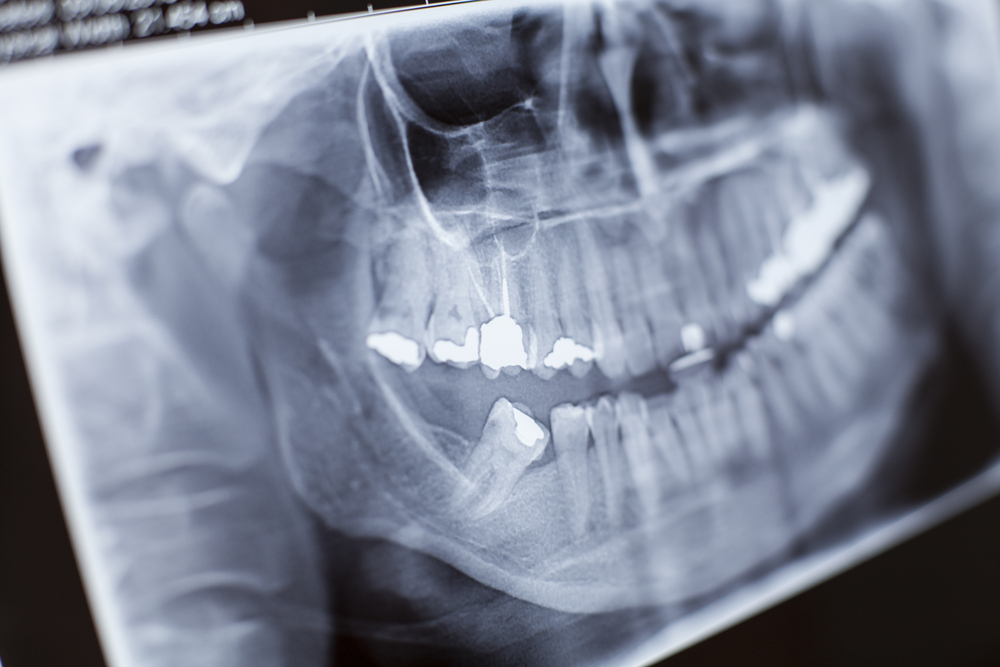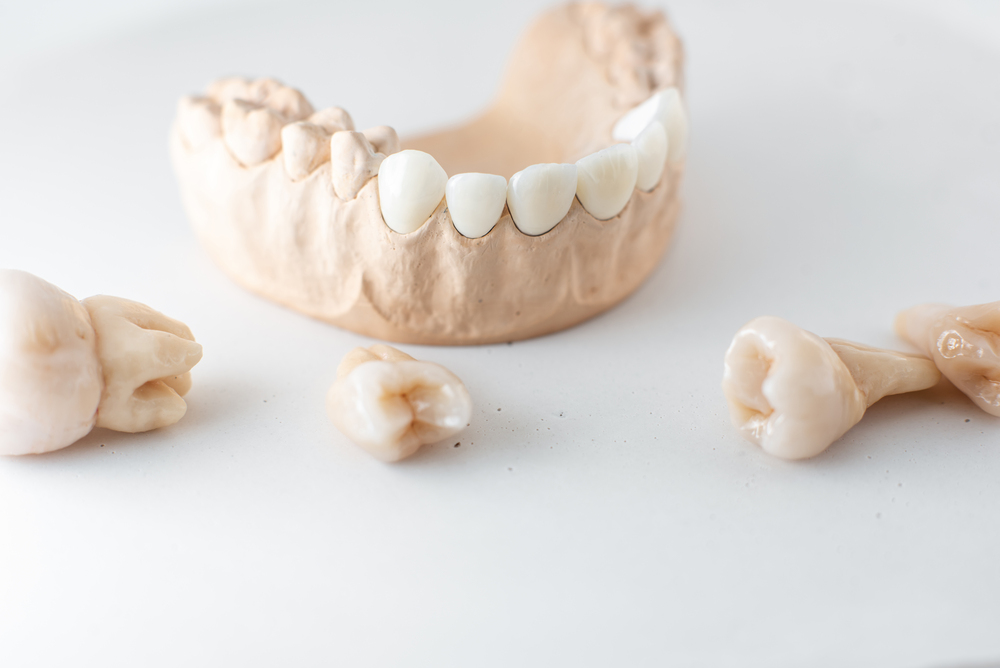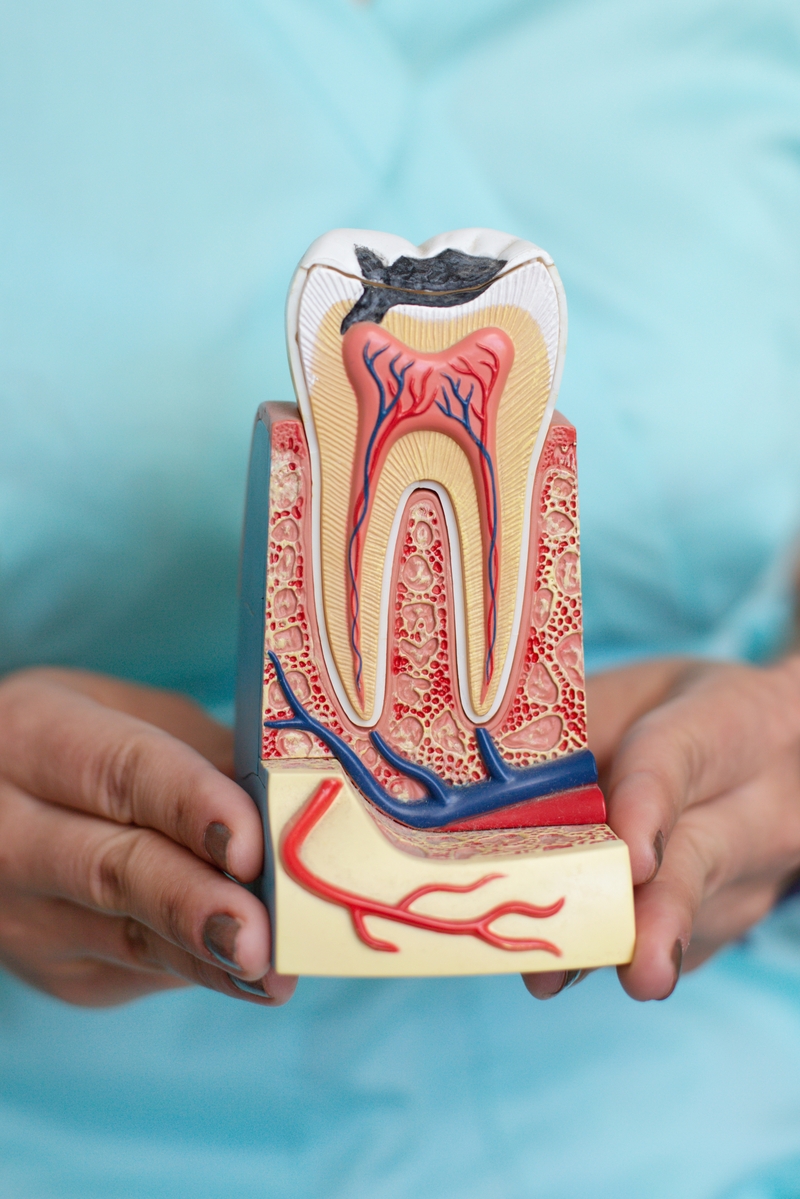Our Blog
Impacted Teeth: A Comprehensive Guide to Understanding Risks and Treatment Options
Tooth Abscess: Understanding Symptoms and Urgency of Treatment
The Hidden Dangers of Ignoring Wisdom Teeth: Risks and Removal Options
Implant-Supported Crowns vs. Traditional Crowns: Comparing Aesthetics and Durability
Root Canal Therapy vs. Tooth Extraction: Weighing Your Options
Beyond the Surface: Exploring Deep Dental Cleanings for Advanced Periodontal Care
Straight Talk: Navigating Orthodontic Treatments for Brilliant Smiles
Gum Contouring: Reshaping Your Gum Line for a More Balanced and Beautiful Smile
Crafting Your Perfect Smile: A Guide to Selecting the Right Toothbrush and Toothpaste
Understanding Gum Disease: Unveiling Symptoms, Prevention, and Treatment Strategies
Emergency Dental Care: Quick Action for Oral Health Relief
Halitosis: Understanding and Treating Bad Breath with General Dentistry
Blooming Smiles: Nurturing Oral Health During Pregnancy – Tips for Expectant Mothers
Quenching the Thirst: Combatting Dry Mouth – Causes, Effects, and Remedies
Aging Gracefully: Navigating Dental Implants Options for Seniors
Smile Renewal: Exploring Cosmetic Dentistry Solutions for Missing Teeth
Crafting Your Perfect Smile: A Guide to Selecting the Right Toothbrush and Toothpaste
Understanding Gum Disease: Unveiling Symptoms, Prevention, and Treatment Strategies
Emergency Dental Care: Quick Action for Oral Health Relief
Halitosis: Understanding and Treating Bad Breath with General Dentistry
The Role of Saliva in Oral Health: Why It Matters
Dealing with Dental Anxiety: Tips for a Stress-Free Dental Visit
All About Wisdom Teeth: Emergence and the Need for Removal
Bruxism: Understanding Teeth Grinding and How to Stop It
Professional vs. Over-the-Counter Teeth Whitening: Which Is Right for You?
The Smoking Habit and Tooth Discoloration: A Stain on Your Smile
Thumb Sucking and Pacifier Use: Nurturing Habits or Dental Dilemmas?
Smiles for Little Ones: Child-Friendly Dental Hygiene Tips
Dental Implants or Dentures: Finding Your Perfect Fit for a Confident Smile
Choosing Between Veneers and Crowns: Your Path to a Perfect Smile
Decoding Jaw Pain: Expert Insights on TMJ-TMD and its Management
Sleep Soundly: Understanding Sleep Apnea and Its Impact on Your Health
Unveiling Your Options: Exploring the Different Types of Dental Veneers
Crafting Your Perfect Smile: The Art of Customization and Shade Selection in Dental Veneers
Understanding Dental Implants: Your Pathway to a Confident Smile
Bite Right, Smile Bright: Conquer Occlusal Disease for Optimal Oral Health!
Smile Brighter: Unleash Your Radiant White Smile with Teeth Whitening!
Unlock Your Perfect Smile: Understanding the Power of Dental Veneers
Baby Tooth Care 101: Nurturing Healthy Smiles from the Start
The Ultimate Guide to Dental Implants: Everything You Need to Know
Smile Like a Star: Transform Your Smile With Veneers! July 4th, 2023
Preventive Dental Care: Building a Foundation for a Lifetime of Smiles June 26th, 2023
Impacted Teeth: A Comprehensive Guide to Understanding Risks and Treatment Options

Impacted teeth are a common dental issue that can lead to discomfort, complications, and even oral health problems if left untreated. Understanding what impacted teeth are, the risks they pose, and the available treatment options is crucial for maintaining optimal oral health. In this blog post, we'll delve into the causes, symptoms, risks, and treatment options for impacted teeth to help you make informed decisions about your dental care.
What are Impacted Teeth?
Impacted teeth are teeth that fail to emerge or fully erupt through the gums into their proper position within the dental arch. This often occurs due to insufficient space in the mouth or obstruction along the tooth's path of eruption. Wisdom teeth, also known as third molars, are the most commonly impacted teeth, but any tooth can become impacted.
Causes of Impacted Teeth
Several factors can contribute to the development of impacted teeth, including:
- Genetics: The size and shape of the jawbone can be inherited, affecting the amount of space available for teeth to erupt properly.
- Overcrowding: Crowded teeth can block the path of eruption for other teeth, leading to impaction.
- Abnormal Tooth Development: Sometimes, teeth may develop abnormally or at an angle, making it difficult for them to emerge properly.
- Retention of Primary Teeth: Failure of primary (baby) teeth to shed can impede the eruption of permanent teeth.
- Tumors or Cysts: Tumors or cysts in the jawbone can obstruct the eruption of teeth, leading to impaction.
Symptoms of Impacted Teeth
Impacted teeth may not always cause symptoms, but when they do, common signs and symptoms include:
- Pain or Discomfort: Persistent pain or discomfort, especially around the impacted tooth or neighboring teeth.
- Swelling and Redness: Swelling and redness in the gums surrounding the impacted tooth.
- Difficulty Chewing: Difficulty chewing or biting due to the impacted tooth's position or pressure on adjacent teeth.
- Jaw Stiffness: Stiffness or limited movement of the jaw, particularly if the impacted tooth is a wisdom tooth.
Risks Associated with Impacted Teeth
Leaving impacted teeth untreated can lead to various complications, including:
- Tooth Decay: Impacted teeth are more challenging to clean properly, increasing the risk of tooth decay and gum disease.
- Infection: Bacteria and food particles trapped around impacted teeth can lead to localized infection (pericoronitis) or more severe infections such as abscesses.
- Damage to Adjacent Teeth: Impacted teeth can exert pressure on neighboring teeth, causing them to shift or become misaligned.
- Cysts or Tumors: Impacted teeth may increase the risk of cysts or tumors developing in the jawbone.
Treatment Options for Impacted Teeth
The treatment for impacted teeth depends on various factors, including the tooth's position, the severity of impaction, and the patient's overall oral health. Common treatment options include:
- Monitoring: In some cases, impacted teeth may be closely monitored by a dentist or oral surgeon to assess any changes or potential complications.
- Extraction: Extraction is often recommended for impacted wisdom teeth or teeth causing significant symptoms or complications.
- Surgical Exposure and Orthodontic Treatment: For impacted teeth that can be brought into proper alignment, surgical exposure and orthodontic treatment may be recommended to create space and guide the tooth's eruption.
- Management of Symptoms: Symptomatic relief measures such as pain management and antibiotics may be prescribed to alleviate discomfort and prevent infection.
Conclusion
Impacted teeth can pose risks to oral health and overall well-being if left untreated. Understanding the causes, symptoms, risks, and treatment options for impacted teeth is essential for maintaining optimal oral health. If you suspect you have impacted teeth or are experiencing symptoms such as pain, swelling, or difficulty chewing, consult with a qualified dentist or oral surgeon for evaluation and appropriate treatment recommendations. Remember, early intervention can help prevent complications and preserve your smile for years to come.
Precision Treatment for Impacted Teeth: Your Solution Starts at the Center for Dental Health
When dealing with impacted teeth, seeking expert care is crucial for preserving your oral health and preventing complications. At the Center for Dental Health, Drs. John Wazney, Neil Brofman, Erica Wazney, and our esteemed team are dedicated to providing compassionate and effective dental care to our patients.
With years of experience and advanced training in oral surgery and dental procedures, our team is well-equipped to diagnose and treat impacted teeth with precision and expertise. Whether you're experiencing symptoms such as pain, swelling, or difficulty chewing, or you simply want to ensure the health of your wisdom teeth, we're here to help.
By trusting your impacted teeth care to the Center for Dental Health, you can rest assured that you're in capable hands. Our personalized approach to treatment focuses on addressing your unique needs and concerns to achieve optimal outcomes and preserve your smile for years to come.
To schedule a consultation or learn more about our services, you can contact the Beachwood location, call (216) 831-8118, or contact our Willowick location at (440) 944-3000 or visit our website. Don't let impacted teeth compromise your oral health and quality of life. Reach out to us today, and let us help you achieve a healthy, pain-free smile that you can be proud of.
Tooth Abscess: Understanding Symptoms and Urgency of Treatment

A tooth abscess is not only excruciatingly painful but also potentially dangerous if left untreated. Recognizing the symptoms and understanding the urgency of seeking treatment are crucial for preventing serious complications. In this blog post, we'll delve into what a tooth abscess is, its symptoms, and why prompt treatment is essential for preserving oral health and overall well-being.
What is a Tooth Abscess?
A tooth abscess is a pocket of pus that forms due to a bacterial infection. It typically occurs within the tooth or in the surrounding gums and tissues. This infection is often a result of untreated tooth decay, gum disease, or dental trauma. Without proper intervention, the infection can spread to other parts of the body, leading to severe complications.
Recognizing Symptoms
Understanding the symptoms of a tooth abscess is crucial for early detection and prompt treatment. Common signs and symptoms include:
- Severe Toothache: The pain associated with a tooth abscess is often intense and persistent, worsening over time. It may radiate to the jaw, ear, or neck.
- Swelling: Swelling of the face, gums, or lymph nodes near the affected tooth is common. In some cases, the swelling may be accompanied by redness and tenderness.
- Sensitivity to Temperature: Increased sensitivity to hot or cold foods and beverages is often experienced, particularly when the abscess is located within the tooth.
- Fever: A fever may develop as the body tries to fight off the infection. Fever is a sign of systemic involvement and requires immediate attention.
- Foul Taste or Breath Odor: Pus draining from the abscess can cause a foul taste in the mouth and persistent bad breath.
- Difficulty Chewing or Swallowing: As the infection progresses, chewing and swallowing may become painful and difficult.
Importance of Prompt Treatment
Seeking prompt treatment for a tooth abscess is crucial for several reasons:
- Pain Relief: Immediate treatment can alleviate the intense pain associated with a tooth abscess, improving the patient's quality of life and well-being.
- Prevention of Complications: Without treatment, a tooth abscess can lead to serious complications, including the spread of infection to the jawbone, sinuses, or bloodstream. In severe cases, it can even result in systemic infections that affect vital organs.
- Preservation of Tooth Structure: Early intervention can help preserve the affected tooth and surrounding tissues, preventing the need for more extensive dental procedures such as extraction or root canal therapy.
- Protecting Overall Health: Oral health is closely linked to overall health. By addressing a tooth abscess promptly, individuals can reduce the risk of systemic health issues associated with untreated dental infections.
Conclusion
A tooth abscess is a serious dental condition that requires immediate attention. Recognizing the symptoms and seeking prompt treatment are essential for relieving pain, preventing complications, and preserving oral and overall health. If you suspect you have a tooth abscess or are experiencing symptoms such as severe toothache, swelling, or fever, don't delay seeking dental care. Your dentist can diagnose the problem and recommend appropriate treatment to restore your oral health and well-being. Remember, early intervention is key to a swift recovery and a healthy smile.
Trust Your Oral Health to the Experts at the Center for Dental Health
When it comes to your oral health, prompt attention and expert care are paramount, especially when dealing with a tooth abscess. At the Center for Dental Health, Drs. John Wazney, Neil Brofman, Erica Wazney, and our esteemed team are dedicated to providing compassionate and comprehensive dental care to our patients.
Recognizing the urgency of addressing a tooth abscess, our experienced dentists and staff are here to help alleviate your pain, prevent complications, and restore your oral health. Whether you're experiencing severe toothache, swelling, or other symptoms indicative of a tooth abscess, don't hesitate to reach out to us.
You can contact us directly at the Beachwood location, call (216) 831-8118, or contact our Willowick location at (440) 944-3000 to schedule an appointment or visit our website for more information about our services and to book your consultation. Trust your oral health to the experts at the Center for Dental Health, where your comfort and well-being are our top priorities.
Don't let a tooth abscess compromise your smile and overall health. Reach out to us today, and let us help you achieve a healthy, pain-free mouth for years to come.
The Hidden Dangers of Ignoring Wisdom Teeth: Risks and Removal Options
.jpg)
Wisdom teeth, also known as third molars, are the last set of molars to emerge in the back of the mouth. While they can be a valuable asset when healthy and properly aligned, they often pose significant risks when they become impacted or fail to erupt fully. In this blog post, we'll explore the hidden dangers of ignoring wisdom teeth, including potential risks and complications, as well as options for removal to safeguard oral health.
Understanding Wisdom Teeth
Wisdom teeth typically emerge during the late teenage years or early adulthood. However, due to changes in dietary habits and jaw size over time, many individuals lack adequate space in their mouths for these additional molars to erupt properly. As a result, wisdom teeth may become impacted, meaning they are unable to fully emerge from the gum line, or they may grow in at an angle, crowding surrounding teeth.
Risks of Ignoring Wisdom Teeth
Ignoring impacted or poorly positioned wisdom teeth can lead to a range of oral health problems, including:
- Tooth Decay and Gum Disease: Impacted wisdom teeth create hard-to-reach areas where food and bacteria can accumulate, increasing the risk of tooth decay, gum disease, and infection.
- Crowding and Misalignment: Wisdom teeth that erupt at an angle or in a crowded space can push against adjacent teeth, causing misalignment, bite problems, and potential damage to neighboring teeth.
- Cysts and Tumors: In rare cases, impacted wisdom teeth can lead to the development of cysts or tumors in the jawbone, which may require surgical intervention to remove.
- Sinus Issues: Upper wisdom teeth that become impacted may grow into the sinuses, leading to sinus pain, pressure, and congestion.
- Chronic Pain: Impacted wisdom teeth can cause chronic pain and discomfort in the jaw, gums, and surrounding teeth, affecting quality of life and overall well-being.
Options for Removal
When wisdom teeth pose a risk to oral health, removal is often recommended to prevent potential complications. Here are some common options for wisdom tooth extraction:
- Simple Extraction: If a wisdom tooth has fully erupted and is not impacted, a simple extraction may be performed under local anesthesia in the dentist's office.
- Surgical Extraction: For impacted or partially erupted wisdom teeth, surgical extraction may be necessary. This procedure is typically performed by an oral surgeon under local or general anesthesia.
- Preventive Extraction: In some cases, wisdom teeth may be removed preventively before they cause problems. This proactive approach can reduce the risk of future complications and simplify the extraction process.
Conclusion
Ignoring wisdom teeth can lead to serious oral health issues, including tooth decay, gum disease, misalignment, and chronic pain. It's essential to monitor the development of wisdom teeth and consult with a dentist or oral surgeon if any signs of impaction or misalignment are present. Early intervention and removal of problematic wisdom teeth can help safeguard oral health and prevent potential complications down the road. If you're experiencing symptoms related to wisdom teeth, don't hesitate to seek professional advice and explore options for removal to ensure a healthy and pain-free smile for years to come.
Safeguard Your Smile: Wisdom Teeth Awareness with Center for Dental Health
Understanding the risks associated with wisdom teeth is crucial for maintaining optimal oral health. Ignoring impacted or poorly positioned wisdom teeth can lead to serious complications, including tooth decay, gum disease, and chronic pain. Fortunately, the experienced team at the Center for Dental Health, led by Drs. John Wazney, Neil Brofman, and Erica Wazney, are here to help.
Whether you're experiencing symptoms related to wisdom teeth or simply want to ensure your smile remains healthy and pain-free, don't hesitate to reach out to us. With our expertise in wisdom tooth extraction and oral health care, we can provide personalized solutions to address your needs.
Contact us today at the Beachwood location, call (216) 831-8118, or contact our Willowick location at (440) 944-3000 or visit our website to schedule a consultation. Let us help you safeguard your smile and preserve your oral health for years to come.
Implant-Supported Crowns vs. Traditional Crowns: Comparing Aesthetics and Durability

When it comes to restoring a damaged or missing tooth, crowns are often the go-to solution. They not only improve the appearance of your smile but also provide strength and functionality to your bite. However, with advancements in dental technology, patients now have a choice between traditional crowns and implant-supported crowns. In this blog, we'll delve into the differences between these two options, focusing on aesthetics and durability.
Traditional Crowns
Traditional crowns are prosthetic caps that are placed over a natural tooth or a dental implant. They are typically made from materials like porcelain, ceramic, metal, or a combination of these materials. Here's a closer look at the pros and cons of traditional crowns:
Pros:
- Proven Track Record: Traditional crowns have been used in dentistry for decades and have a long history of success.
- Aesthetic Options: They can be customized to match the color, size, and shape of your natural teeth, providing a seamless appearance.
- Versatility: Traditional crowns can be used to restore both single teeth and multiple teeth.
Cons:
- Requires Healthy Tooth Structure: To place a traditional crown, a significant portion of the natural tooth needs to be removed, which can weaken the tooth over time.
- Potential for Decay: Since traditional crowns are placed over existing teeth, there is a risk of decay or damage to the underlying tooth structure.
- Longevity: While traditional crowns can last for many years with proper care, they may need to be replaced eventually due to wear and tear.
Implant-Supported Crowns
Implant-supported crowns involve the placement of a dental implant into the jawbone, which serves as a stable foundation for the crown. The crown is then attached to the implant, providing a secure and durable restoration. Let's explore the pros and cons:
Pros:
- Preserves Adjacent Teeth: Since implants are placed directly into the jawbone, they do not require the alteration of adjacent teeth, preserving their natural structure.
- Enhanced Stability: Implant-supported crowns offer exceptional stability and strength, mimicking the feel and function of natural teeth.
- Longevity: With proper maintenance and oral hygiene, implant-supported crowns can last a lifetime, making them a durable long-term solution.
Cons:
- Surgical Procedure: The placement of dental implants involves oral surgery, which may require a longer recovery time compared to traditional crown placement.
- Higher Cost: Implant-supported crowns tend to be more expensive upfront than traditional crowns, although they may offer cost savings in the long run due to their longevity.
Conclusion
Both implant-supported crowns and traditional crowns have their advantages and disadvantages when it comes to aesthetics and durability. Ultimately, the best option for you will depend on factors such as your oral health, budget, and personal preferences. Consulting with a qualified dentist or prosthodontist can help you make an informed decision and achieve the smile you desire. Whether you opt for the tried-and-true traditional crowns or the innovative implant-supported crowns, restoring your smile's beauty and function is within reach.
Implant-Supported Crowns: Elevating Standards in Dental Excellence at Center for Dental Health
As we draw to a close in our exploration of implant-supported crowns, it's clear that this innovative dental solution offers unmatched benefits in both aesthetics and durability. At the Center for Dental Health, Drs. John Wazney, Neil Brofman, and Erica Wazney, along with our esteemed team, are committed to providing patients with the highest quality of care and transformative results.
Implant-supported crowns not only enhance the appearance of your smile but also offer exceptional stability and longevity. With our expertise and advanced techniques, we ensure that each patient receives customized treatment tailored to their unique needs, resulting in optimal oral health and satisfaction.
Whether through a direct call at the Beachwood location, call (216) 831-8118, or contact our Willowick location at (440) 944-3000 or by visiting our website, our team is here to guide you on your journey to a healthier, more radiant smile. Trust the Center for Dental Health to elevate your dental experience and transform your confidence.
Root Canal Therapy vs. Tooth Extraction: Weighing Your Options
Facing dental issues can be daunting, especially when deciding between root canal therapy and tooth extraction. Both procedures offer solutions for problematic teeth, but they differ significantly in terms of approach, recovery, and long-term implications. Let's explore the factors to consider when weighing these two options.
Understanding Root Canal Therapy
Root canal therapy, also known as endodontic treatment, involves removing infected or damaged tissue from inside the tooth's pulp chamber and root canals. The procedure aims to save the natural tooth by cleaning, disinfecting, and sealing the affected areas. Once completed, the tooth is restored with a filling or crown to strengthen and protect it from further damage.
Considering Tooth Extraction
Tooth extraction entails the complete removal of a damaged or diseased tooth from its socket in the jawbone. This approach is typically recommended when the tooth is severely decayed, fractured beyond repair, or causing significant pain and infection. Following extraction, various tooth replacement options, such as dental implants or bridges, may be considered to restore function and aesthetics.
Factors to Consider When Choosing
1. Tooth Condition
- Root Canal Therapy: Suitable for teeth with infected or inflamed pulp but structurally intact crowns.
- Tooth Extraction: Preferred for severely damaged or decayed teeth with compromised structural integrity.
2. Long-Term Tooth Preservation
- Root Canal Therapy: Preserves the natural tooth, maintains jawbone integrity, and helps prevent adjacent teeth from shifting.
- Tooth Extraction: Removes the affected tooth but may lead to bone resorption and potential misalignment of neighboring teeth over time.
3. Treatment Duration and Complexity
- Root Canal Therapy: Typically completed in one or two appointments, depending on the tooth's condition and complexity.
- Tooth Extraction: Immediate removal of the tooth, followed by a healing period before considering replacement options, which may require additional procedures and time.
4. Cost Considerations
- Root Canal Therapy: Initial treatment cost may be higher than extraction; however, it preserves the natural tooth and may reduce the need for extensive restorative work in the future.
- Tooth Extraction: Immediate cost savings; however, replacement options incur additional expenses, which can vary depending on the chosen treatment.
Making an Informed Decision
When faced with the choice between root canal therapy and tooth extraction, consulting with a qualified dentist or endodontist is crucial. They can assess the condition of the affected tooth, discuss treatment options, and provide personalized recommendations based on your oral health needs and preferences.
Conclusion
Root canal therapy and tooth extraction are valuable treatment options for addressing dental issues and restoring oral health. By weighing the benefits, risks, and long-term implications of each approach, you can make an informed decision that aligns with your goals and priorities.
Remember, maintaining regular dental check-ups and practicing good oral hygiene are essential for preventing dental problems and preserving your smile for years to come.
Restoring Smiles, Preserving Teeth: Root Canal Therapy at the Center for Dental Health
As we conclude our discussion on root canal therapy and its importance in preserving dental health, remember that your smile deserves compassionate care and expert treatment. At the Center for Dental Health, Drs. John Wazney, Neil Brofman, and Erica Wazney are dedicated to providing exceptional root canal therapy tailored to your unique needs.
To take the first step towards restoring your smile and alleviating discomfort, contact us at (216) 831-8118. For our Willowick location, reach out to us at (440) 944-3000. Alternatively, you can visit our website to learn more about our comprehensive dental services and schedule a consultation with our experienced team.
Trust our skilled professionals to guide you through the root canal therapy process with care and expertise. With our commitment to excellence and patient-centered approach, we're here to help you reclaim your oral health and enjoy a brighter, healthier smile.
Beyond the Surface: Exploring Deep Dental Cleanings for Advanced Periodontal Care
Maintaining optimal oral health extends far beyond the surface appearance of our teeth. Deep dental cleanings, also known as scaling and root planing, play a crucial role in advanced periodontal care. Let's delve into the significance of these procedures and why they are essential for preserving the health and integrity of your gums and teeth.
Understanding Periodontal Disease
Periodontal disease, commonly known as gum disease, is a prevalent condition caused by bacterial plaque buildup along the gumline. If left untreated, it can lead to inflammation, gum recession, tooth loss, and systemic health complications. Advanced stages of periodontal disease require specialized treatment to prevent further damage and restore oral health.
The Role of Deep Dental Cleanings
Deep dental cleanings are comprehensive procedures performed by dental professionals to remove plaque, tartar, and bacteria from below the gumline. Unlike regular cleanings, which focus on the visible surfaces of the teeth, deep cleanings target the root surfaces and pockets of the gums affected by periodontal disease.
Key Components of Scaling and Root Planing
1. Scaling
During scaling, dental hygienists use specialized instruments to remove plaque and calculus (tartar) from the surfaces of the teeth, including the areas below the gumline. This process effectively eliminates bacteria and toxins that contribute to gum inflammation and disease progression.
2. Root Planing
Root planing involves smoothing the root surfaces of the teeth to remove rough areas and bacterial deposits. This step helps prevent plaque and tartar accumulation while promoting the reattachment of healthy gum tissue to the roots, reducing pocket depths and enhancing gum health.
Benefits of Deep Dental Cleanings
1. Halting Disease Progression: Deep cleanings effectively halt the progression of periodontal disease by eliminating harmful bacteria and promoting gum healing.
Preventing Tooth Loss: By addressing underlying infection and inflammation, deep cleanings help preserve the supporting structures of the teeth, reducing the risk of tooth loss.
2. Improving Oral Health: Deep cleanings contribute to overall oral health by reducing inflammation, enhancing gum tissue integrity, and promoting a cleaner oral environment.
3. Enhancing Systemic Health: Maintaining optimal oral health through deep cleanings may reduce the risk of systemic conditions associated with periodontal disease, such as heart disease, diabetes, and respiratory infections.
Conclusion
Deep dental cleanings are an essential component of advanced periodontal care, offering comprehensive treatment for gum disease and its associated complications. By addressing the underlying causes of periodontal disease and promoting gum health, deep cleanings help preserve the integrity of your smile and contribute to your overall well-being.
Defending Your Smile: Periodontal Disease Care at the Center for Dental Health
As we conclude our exploration of periodontal disease and the importance of comprehensive care, remember that your smile deserves expert attention and dedicated treatment. At the Center for Dental Health, Drs. John Wazney, Neil Brofman, and Erica Wazney are committed to providing exceptional periodontal care tailored to your unique needs.
To take the first step towards preserving your oral health, contact us at (216) 831-8118. For our Willowick location, reach out to us at (440) 944-3000. Alternatively, you can visit our website to learn more about our advanced periodontal treatments and comprehensive dental services.
Trust Center for Dental Health to guide you on the path to a healthier, happier smile. With our expertise and personalized approach, we're here to support you in defending against periodontal disease and maintaining optimal oral wellness for years to come.
Straight Talk: Navigating Orthodontic Treatments for Brilliant Smiles
In the realm of dental care, achieving a straight and healthy smile is a common aspiration for many. Fortunately, advancements in orthodontic treatments offer a variety of options to help individuals attain the smile they desire. From traditional braces to innovative Invisalign aligners, the field of orthodontics provides solutions tailored to diverse needs and preferences.
Understanding Orthodontic Treatments
Orthodontic treatments focus on correcting misaligned teeth and jaws to enhance both oral health and aesthetics. Here, we delve into some of the most popular options available today:
1. Traditional Braces
Traditional braces consist of metal brackets bonded to the teeth and connected by wires. This time-tested method gradually applies pressure to shift teeth into proper alignment. Modern braces are more comfortable and less conspicuous than their predecessors, thanks to advancements in materials and design.
2. Invisalign
Invisalign revolutionized orthodontic treatment with its clear, removable aligners. Made from smooth plastic, Invisalign aligners are custom-designed to fit snugly over the teeth, gently guiding them into the desired position. This discreet option is particularly popular among adults and teenagers seeking a less noticeable alternative to traditional braces.
3. Ceramic Braces
Ceramic braces offer a more aesthetically pleasing alternative to traditional metal braces. Made of tooth-colored or clear materials, ceramic braces blend seamlessly with the natural color of teeth, making them less noticeable. While similar in function to metal braces, ceramic braces appeal to individuals seeking a subtler orthodontic solution.
4. Lingual Braces
Lingual braces are placed on the inner surface of the teeth, making them virtually invisible from the outside. Custom-made to fit the contours of each patient's teeth, lingual braces offer an inconspicuous option for those who prefer discreet orthodontic treatment.
5. Clear Aligner Systems
In addition to Invisalign, several other clear aligner systems are available, offering similar benefits of discreet, removable treatment. These systems utilize advanced technology to map out the tooth movement process, providing patients with a predictable and comfortable treatment experience.
Choosing the Right Treatment
Selecting the most suitable orthodontic treatment depends on various factors, including the severity of misalignment, personal preferences, lifestyle, and budget. During an initial consultation, an orthodontist will assess the patient's oral health and discuss treatment options tailored to their needs.
The Importance of Orthodontic Treatment
Beyond aesthetic improvements, orthodontic treatment offers numerous health benefits, including:
1. Improved oral hygiene: Straight teeth are easier to clean, reducing the risk of gum disease and tooth decay.
2. Enhanced bite function: Properly aligned teeth contribute to a balanced bite, reducing strain on the jaw joints and muscles.
3. Prevention of dental issues: Orthodontic treatment can help prevent problems such as TMJ disorders, speech impediments, and excessive wear on tooth enamel.
Conclusion
Orthodontic treatments play a vital role in enhancing both oral health and self-confidence. Whether opting for traditional braces, Invisalign, or other innovative solutions, individuals have access to a range of options designed to meet their unique needs. By consulting with an experienced orthodontist and exploring available treatments, patients can embark on a journey toward a straighter, healthier smile.
Discover Your Smile: Orthodontic Excellence at the Center for Dental Health
In closing, your journey to a confident and healthy smile begins with expert care and personalized orthodontic treatments. At the Center for Dental Health, Drs. John Wazney, Neil Brofman, and Erica Wazney are committed to providing unparalleled orthodontic excellence tailored to your unique needs.
To schedule a consultation and explore your orthodontic options, contact us at (216) 831-8118. For our Willowick location, reach out to us at (440) 944-3000. Alternatively, you can visit our website for more information on our comprehensive range of services.
Trust us to guide you on the path to a lifetime of dental health and confidence. Your smile transformation awaits at the Center for Dental Health.
Gum Contouring: Reshaping Your Gum Line for a More Balanced and Beautiful Smile
Your smile is one of your most powerful assets. It communicates warmth, confidence, and happiness. However, sometimes, factors like genetics, gum disease, or certain medications can lead to an uneven or excessive gum line, detracting from an otherwise stunning smile. Fortunately, modern dentistry offers a solution: gum contouring. In this blog post, we'll explore what gum contouring is, its benefits, the procedure itself, and what you can expect during and after treatment.
What is Gum Contouring?
Gum contouring, also known as gum reshaping or gum sculpting, is a cosmetic dental procedure designed to enhance the appearance of your smile by reshaping the gumline. It involves the removal of excess gum tissue or reshaping of the existing tissue to create a more proportionate and aesthetically pleasing smile. Gum contouring can address issues such as a "gummy smile" (excessive display of gum tissue when smiling), asymmetrical gumline, or uneven gum tissue around the teeth.
Benefits of Gum Contouring
1. Enhanced Aesthetics: By creating a more balanced gumline, gum contouring can enhance the overall appearance of your smile, making it look more symmetrical and proportionate.
2. Improved Confidence: Many individuals feel self-conscious about their smile due to excessive or uneven gums. Gum contouring can help boost confidence by providing a more aesthetically pleasing smile.
3. Better Oral Health: In some cases, excessive gum tissue can harbor bacteria and make oral hygiene practices less effective. Reshaping the gumline can improve access for brushing and flossing, thus promoting better oral health.
The Procedure
Gum contouring is typically performed by a periodontist or a cosmetic dentist. Before the procedure, your dentist will conduct a thorough examination of your gums and teeth to determine the extent of reshaping required and discuss your treatment goals.
During the procedure
1. Local Anesthesia: Your dentist will administer a local anesthetic to numb the gums and minimize discomfort during the procedure.
2. Reshaping: Using specialized dental tools, the dentist will carefully remove excess gum tissue or sculpt the existing tissue to achieve the desired shape and symmetry.
3. Smoothing and Shaping: Once the excess tissue is removed, the gumline is sculpted and shaped to create a natural-looking contour.
4. Final Assessment: Your dentist will evaluate the results to ensure symmetry and proportion before completing the procedure.
Post-Procedure Care
After gum contouring, it's essential to follow your dentist's post-procedure instructions, which may include:
1. Avoiding Hard Foods: Stick to soft foods for the first few days to allow the gums to heal properly.
2. Gentle Oral Hygiene: Be gentle when brushing and flossing around the treated area to prevent irritation.
3. Pain Management: Over-the-counter pain relievers can help alleviate any discomfort.
4. Follow-up Appointments: Attend follow-up appointments with your dentist to monitor healing and ensure optimal results.
Conclusion
Gum contouring is a minimally invasive procedure that can significantly improve the appearance of your smile and boost your confidence. Whether you're dealing with a gummy smile or uneven gum line, consulting with a qualified cosmetic dentist can help you achieve the smile you've always wanted. Remember, a beautiful smile not only enhances your appearance but also reflects your inner confidence and happiness. If you're considering gum contouring, take the first step towards a more balanced and beautiful smile today.
Redefine Your Smile: Experience the Magic of Gum Contouring at the Center for Dental Health
Transforming smiles into works of art is our passion at the Center for Dental Health, where Drs. John Wazney, Neil Brofman, and Erica Wazney bring expertise and artistry to every procedure, including gum contouring.
Ready to unveil your best smile yet? Contact the Center for Dental Health at (440) 944-3000 or visit our website to schedule your consultation and discover the possibilities of gum contouring.
With the skilled hands of our experienced team, let's redefine your smile and unlock newfound confidence with gum contouring at the Center for Dental Health.
Crafting Your Perfect Smile: A Guide to Selecting the Right Toothbrush and Toothpaste

Maintaining excellent oral hygiene is a key component of overall health, and the foundation of a healthy mouth lies in selecting the right toothbrush and toothpaste. In this guide, we'll explore the factors to consider when choosing these essential oral care tools, helping you achieve a brighter, healthier smile.
Choosing the Perfect Toothbrush
Bristle Type
- Soft Bristles: Gentle on gums and enamel, suitable for most individuals.
- Medium Bristles: Slightly firmer, effective for removing plaque without causing damage.
- Hard Bristles: Not recommended for most people as they can be harsh on gums and enamel.
Bristle Arrangement
- Flat Trim: Straight-across bristles for a broader cleaning surface.
- Criss-Cross: Angled bristles for reaching between teeth and along the gumline.
- Multilevel: Varied height bristles to clean different tooth surfaces effectively.
Head Size
- Small heads are ideal for reaching tight spaces and back molars.
- Larger heads cover more surface area, making them suitable for quick and efficient cleaning.
Handle Design
- Straight handles offer precise control.
- Angled or contoured handles can provide a more comfortable grip.
Powered or Manual
- Powered toothbrushes can be more effective, especially for those with dexterity issues.
- Manual toothbrushes are simple, cost-effective, and suitable for most users.
Decoding Toothpaste Labels
Fluoride Content
- Essential for preventing tooth decay and strengthening enamel.
- Most toothpaste brands include fluoride, but it's crucial to check for its presence.
Tartar Control
- Ideal for those prone to tartar buildup.
- Contains ingredients to inhibit the formation of tartar.
Sensitivity Formula
- Designed for individuals with sensitive teeth.
- Contains potassium nitrate or strontium chloride to alleviate sensitivity.
Whitening Properties
- Whitening toothpaste often includes mild abrasives or hydrogen peroxide.
- Regular use can help remove surface stains for a brighter smile.
Natural or Herbal Options
- Some individuals prefer toothpaste with natural ingredients and without artificial additives.
- Herbal toothpaste may contain ingredients like tea tree oil or neem for added benefits.
Tips for Effective Brushing
- Frequency: Brush at least twice a day, preferably in the morning and before bed.
- Duration: Spend at least two minutes brushing to ensure a thorough clean.
- Technique: Use gentle, circular motions and pay attention to all tooth surfaces, including the tongue and gums.
- Replace Regularly: Change your toothbrush or toothbrush head every three to four months, or sooner if bristles show signs of wear.
By making informed choices about your toothbrush and toothpaste, you can enhance your daily oral care routine and contribute to a radiant, healthy smile. Regular dental check-ups are equally important, so don't forget to schedule those routine visits to maintain optimal oral health.
Elevate Your Oral Care with the Center for Dental Health
At the Center for Dental Health, we prioritize your dental well-being. Our team of experienced professionals, including Drs. John Wazney, Neil Brofman, and Erica Wazney, is dedicated to providing comprehensive dental care. For personalized advice on choosing the right toothbrush and toothpaste or to schedule a dental check-up, contact our Beachwood location at (216) 831-8118 or our Willowick location at (440) 944-3000. You can also conveniently schedule your appointment through our website. Trust us to be your partners in achieving and maintaining optimal oral health, ensuring your smile receives the best care possible.
Understanding Gum Disease: Unveiling Symptoms, Prevention, and Treatment Strategies

Gum disease, also known as periodontal disease, is a common but often preventable condition that affects the gums and supporting structures of the teeth. In this comprehensive guide, we will delve into the symptoms, preventive measures, and treatment options for gum disease, empowering you to maintain optimal gum health.
Symptoms of Gum Disease
Early Signs:
- Gingivitis: Inflammation of the gums, causing redness, swelling, and sometimes bleeding during brushing.
- Bad Breath: Persistent bad breath that doesn't improve with oral hygiene.
Advanced Signs:
- Receding Gums: Gums pulling away from the teeth, exposing the tooth roots.
- Pocket Formation: Spaces or pockets between the teeth and gums, harboring bacteria.
- Loose Teeth: Weakening of the structures supporting the teeth, leading to mobility.
Prevention Strategies
- Effective Oral Hygiene: Regular brushing, flossing, and mouthwash use to remove plaque and bacteria.
- Regular Dental Check-ups: Professional cleanings and examinations to detect early signs of gum disease.
- Healthy Lifestyle Choices: Avoiding tobacco, maintaining a balanced diet, and managing stress contribute to gum health.
Treatment Options
- Scaling and Root Planing: Deep cleaning to remove plaque and tartar from below the gumline.
- Antibiotics: Medications to control bacterial infection and inflammation.
- Flap Surgery: Surgical procedure to lift the gums, remove tartar, and reposition the gums.
- Bone Grafts: Restoring damaged bone around the teeth.
- Laser Therapy: Using lasers to remove inflamed gum tissue and reduce bacteria.
Conclusion
Understanding gum disease is pivotal in maintaining a healthy smile. By recognizing symptoms, embracing preventive measures, and seeking timely treatment, you can safeguard your gums and overall oral health. Regular dental check-ups play a crucial role in early detection and effective management of gum disease.
Comprehensive Gum Disease Awareness and Care at the Center for Dental Health
At the Center for Dental Health, our team, led by Drs. John Wazney, Neil Brofman, and Erica Wazney, are committed to helping you achieve and maintain optimal gum health. Schedule your dental check-up today at our Beachwood location by calling (216) 831-8118 or reach out to our Willowick location at (440) 944-3000. Visit our website for convenient online appointment scheduling. Your healthy gums are our priority, and we're here to guide you on your journey to a vibrant smile.
Emergency Dental Care: Quick Action for Oral Health Relief
Dental emergencies can strike unexpectedly, causing pain and anxiety. Knowing how to respond promptly and effectively is crucial for managing dental emergencies and safeguarding your oral health. In this blog post, we'll explore common dental emergencies and provide guidance on what to do in these situations.
Types of Dental Emergencies
1. Toothache
- Rinse your mouth with warm water to clean it.
- Use dental floss to remove any trapped debris.
- If pain persists, avoid placing aspirin on the gums as it may cause irritation. Instead, take over-the-counter pain relievers as directed.
2. Knocked-Out Tooth
- Handle the tooth by the crown (top part), not the root.
- Rinse it gently, but avoid scrubbing or removing any attached tissue.
- If possible, place the tooth back into its socket or keep it in milk while seeking immediate dental attention.
3. Broken or Chipped Tooth
- Save any broken pieces.
- Rinse your mouth with warm water.
- Apply a cold compress to reduce swelling.
- Contact your dentist for an appointment.
4. Lost Filling or Crown
- Use over-the-counter dental cement to temporarily reattach the crown.
- Avoid using super glue or other adhesives.
- Schedule an appointment with your dentist to address the issue.
5. Abscess or Swelling
- Rinse your mouth with a mild saltwater solution.
- Use a cold compress to reduce swelling.
- Seek immediate dental care to prevent the spread of infection.
What to Do
1. Contact Your Dentist
- Call your dentist as soon as possible to explain the situation and schedule an emergency appointment.
2. Preserve Dislodged Teeth
- Keep a knocked-out tooth moist by placing it in milk or between your cheek and gums until you can see a dentist.
3. Manage Pain
- Take over-the-counter pain relievers as directed.
- Avoid placing aspirin directly on the gums, as it may cause irritation.
4. Control Bleeding
- Use a clean cloth or gauze to apply gentle pressure to a bleeding area.
- If bleeding persists, seek prompt dental attention.
Conclusion
Being prepared for dental emergencies empowers you to take swift action and minimize potential damage. Remember to contact your dentist promptly for guidance and to schedule an emergency appointment. Maintaining good oral hygiene and attending regular dental check-ups can also contribute to preventing dental emergencies. In times of urgency, a proactive approach ensures that your smile remains healthy and vibrant.
Navigating Dental Emergencies with Confidence at the Center for Dental Health
Your oral health is our top priority at the Center for Dental Health, where Drs. John Wazney, Neil Brofman, and Erica Wazney are dedicated to providing expert care in dental emergencies. We understand the urgency of these situations, and our team is ready to assist you promptly.
For any dental emergencies, contact our Beachwood location at (216) 831-8118 or our Willowick location at (440) 944-3000. If you prefer a convenient way to schedule your appointment, visit our website. Your well-being is crucial, and we're here to ensure you receive the immediate attention and care you need in times of dental emergencies. Trust the Center for Dental Health for swift and effective solutions to preserve your oral health.

Halitosis: Understanding and Treating Bad Breath with General Dentistry
Bad breath, medically known as halitosis, can be a source of embarrassment and discomfort for many individuals. While occasional bad breath is normal, persistent or chronic bad breath may indicate an underlying dental or health issue. In this blog post, we'll explore the causes of halitosis, the importance of general dentistry in its treatment, and preventive measures for maintaining fresh breath.
Common Causes of Halitosis
1. Poor Oral Hygiene
Inadequate brushing and flossing can lead to the buildup of bacteria in the mouth, contributing to bad breath.
2. Gum Disease
Periodontal disease, characterized by inflammation of the gums, can produce foul-smelling breath.
3. Dry Mouth
Saliva helps cleanse the mouth, and a lack of it can result in bad breath. Certain medications and medical conditions can cause dry mouth.
4. Dental Cavities
Untreated cavities can harbor bacteria, causing an unpleasant odor.
5. Tongue Bacteria
The tongue's surface can accumulate bacteria and debris, leading to halitosis.
6. Smoking and Tobacco Use
Tobacco products contribute to bad breath and can also lead to other oral health issues.
7. Medical Conditions
Conditions such as respiratory infections, diabetes, and liver or kidney problems can be associated with bad breath.
The Role of General Dentistry in Treating Halitosis
1. Professional Cleanings
Regular dental cleanings help remove plaque, tartar, and bacteria t





